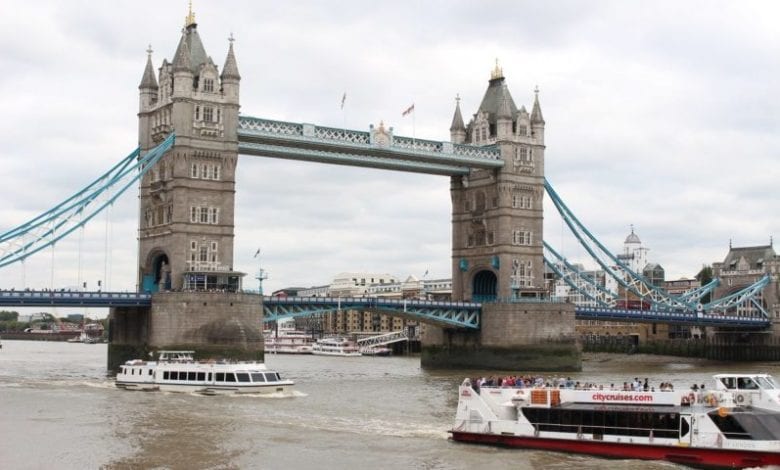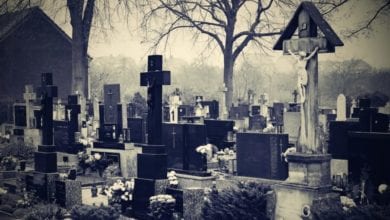Death on holiday: the rise of dark tourism

A light stroll through a derelict grey town filled with the abandoned possessions of those that fled the spewing radioactive fallout of one of the largest nuclear disasters in recent history. Gracefully floating in a rubber ring in the clear water surrounding the Famagusta demilitarised zone. Relaxing in temperatures of above 30°C on the golden sands of the Gaza Strip as missiles and gunfire whizz over your head.
Not necessarily everyone’s idea of a family holiday.
“Dark tourism is tourism to sites associated with death, disasters and atrocities” says Alex Grebenar, a researcher for the University of Central Lancashire’s Institute for Dark Tourism Research (IDTR). “It’s a process that has existed for thousands of years, with the idea of going on pilgrimages after saints died, but in today’s society it has become an industry in its own right”.
Despite its long history the term ‘dark tourism’ was first coined in the 1990s by Lennon and Foley of the Department of Hospitality, Tourism & Leisure Management at Glasgow Caledonian University, when Grebenar says research into the topic and the motives behind it began. Grebenar is keen to point out that this practice is not new: he explains public executions were the “national sport” in the UK during the 1800s. The nature of ‘dark tourist’ destinations varies from “very very basic sites” where there may be no indication that a ‘dark’ event had happened, (the street on which serial killers Fred and Rose West lived) to “very well developed” sites featuring a gift shop and guided tours (York and London Dungeons, which though marketed as a fun attraction are “still talking about death”).
“The idea of being a dark tourist is actually quite debatable,” explains Grebenar, comparing the practice with the “idea of the rubbernecker”. For some people it is “the idea that modern life has become very sanitised, people want something that’s a little bit different, approaching something that not a lot of people talk about in day to day life”. Dark tourists are “happy to go to the site and experience these very dark themes” despite the fact, or indeed perhaps because, it is taboo in their own culture. A “family link” to either recent or historical events is a common reason that someone becomes a ‘dark tourist’. Grebenar says the phenomenon raises questions about “our attitudes as a society towards death, how we view it”, and whether it is “something which is an integral part of who we are as humans”. “Do people view it as something a little bit remote, which is not affecting them so they can compartmentalise it and go and have a look at it, and then almost forget about it?”

A different type of ‘dark tourist’; the type who wishes to visit “sites which are not designed for tourists but people are still visiting”. This type of tourism consists of visitors taking extreme trips where death is present rather than where it happened or where it is commemorated. This can include trips where they are “visiting the border between Israel and Iraq” where war is actively taking place, visiting the sites of nuclear disasters such as Chernobyl and Fukushima, or trips to cartel-run neighborhoods in Colombia and Mexico. Grebenar is careful to point out that the two different types of ‘dark tourism’ (being at risk of death and being in a place where death has happened) are “arguably they are two different things”. With regards to the tourism of active battlefields, Grebenar points out this too would occur many years ago, saying: “People did that in the American Civil War and Napoleonic Wars, people would go and observe to say, this is the battle.”
Sites which, for Grebenar, do not constitute ‘dark tourism’ (in light of the Netflix series ‘The Dark Tourist’) are McKamey Manor, an extreme haunted house in America which tortures its guests for hours and has been accused of “waterboarding” by previous guests. It is, he says, “obviously fake” and “like a horror film”. “There is an important distinction between the supernatural and the real”, adding that the psychological tactics of such places are “routed in the idea of believing” from visitors. He says that ultimately there must be a presence of death in order for a site to be a ‘dark tourism’ destination, however he is happy that the series has done well and that it has brought the practice to the attention of more people, stoking more conversation.
When asked if he thinks most people are ‘dark tourists’ to some degree, using the example that most people have been on school trips to battlefields and memorials, Grebenar agrees. He also agrees with the description of the more involved form of ‘dark tourism’, where the tourist is in immediate threat of death, as a ‘guided tour of death’, reiterating his point about escapism from modern sanitisation. “Seeing is believing” for most people, he says, raising the question of how someone can comprehend the death of millions of people. “It’s unimaginable to conceive – most people don’t know what a million people looks like. It almost requires you to visit to comprehend it.”
When asked what the hot destinations of ‘dark tourism’ are, Grebenar replies: “Auschwitz, is the most infamous one” adding that Ground Zero in New York is probably second on the bucket list of the most keen ‘dark tourists’. In the UK, Grebenar explains that the ‘dark tourism’ offering is a little different with the focus on the graves of famous people who have died. Britain’s most popular destination would be the London dungeon, he says.
Because ‘dark tourism’ relies on those visiting sites of death, it seems inevitable that funeral professionals may encounter them at some point. When asked what those in the funeral profession should expect if a ‘dark tourist’ turns up at their cemetery or place of remembrance, Grebenar is quick to mention the changing attitudes to death. He begins by reassuring funeral professionals that “people are interested because they’re interested, not because it makes them happy and jolly”. “Do we have a relationship with the dead? Or do we sideline them and forget about them?”

He then points out that ‘dark tourism’ is effectively “reconnecting with history”. He says that for younger generations of ‘dark tourists’ it’s a question of what is deemed respectful, saying that what was once seen is disrespectful to an older generation is maybe not seen as so by a younger one. “Do we have to stand in silence and think about it, in what might be termed a little bit old fashioned?” asks Grebenar. He answers his own question, saying that personally, he “would say we do”. But it is hard to know whether the selfies taken at these sites are disrespectful or not. “In 20 years we could have a fundamentally different idea” of selfies taken at ‘dark’ sites, he says, but adds the Tumblr page Selfies at Serious Places gives a good insight into why people take these photos. This type of selfie was made into some very powerful art by an artist who superimposed images of ‘dark tourists’ “dancing and running around and having a really nice time” at Auschwitz against the backdrop of images from the concentration camp during the Second World War. Grebenar used the term “conspicuous compassion” to describe the selfie takers who believe they are doing so respectfully, and concludes by saying that these people are simply telling their friends and followers: “I am here and I care about these people.”
London’s dark destinations
London Dungeons
Grebenar says the London Dungeons are probably the most popular ‘dark’ location in the capital. The attraction focuses on on the darkest parts of London’s history, taking guests on a whistlestop tour through the Great Fire of London, the plague, the murders of Jack the Ripper and Sweeney Todd’s barber shop.
Cemeteries make up the majority of London’s ‘dark’ destinations according to Grebenar, Highgate Cemetery is undoubtedly one of its most popular, with the cemetery even charging for admission.
Grenfell Tower
The emergence of the tower as a ‘dark tourism destination has angered nearby residents along with friends and relatives of those who lost their lives in the fire, following the arrival of a coach load of Chinese tourists last year, notices urging people not to take photos have been erected. Funeral Service Times would advise that people do not visit the tower as a tourist destination.
Tower of London
The Tower of London served many of the UK’s most infamous monarchs and is probably the second most popular ‘dark’ location in the capital. The Tower of London is one of many tourist destinations where the visitors do not realise that in doing so they are participating in ‘dark tourism’.


